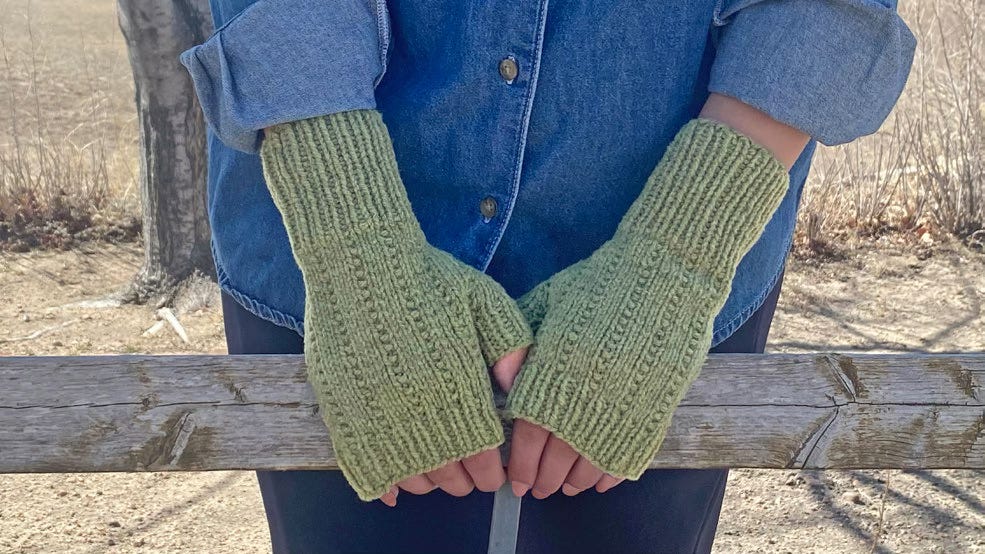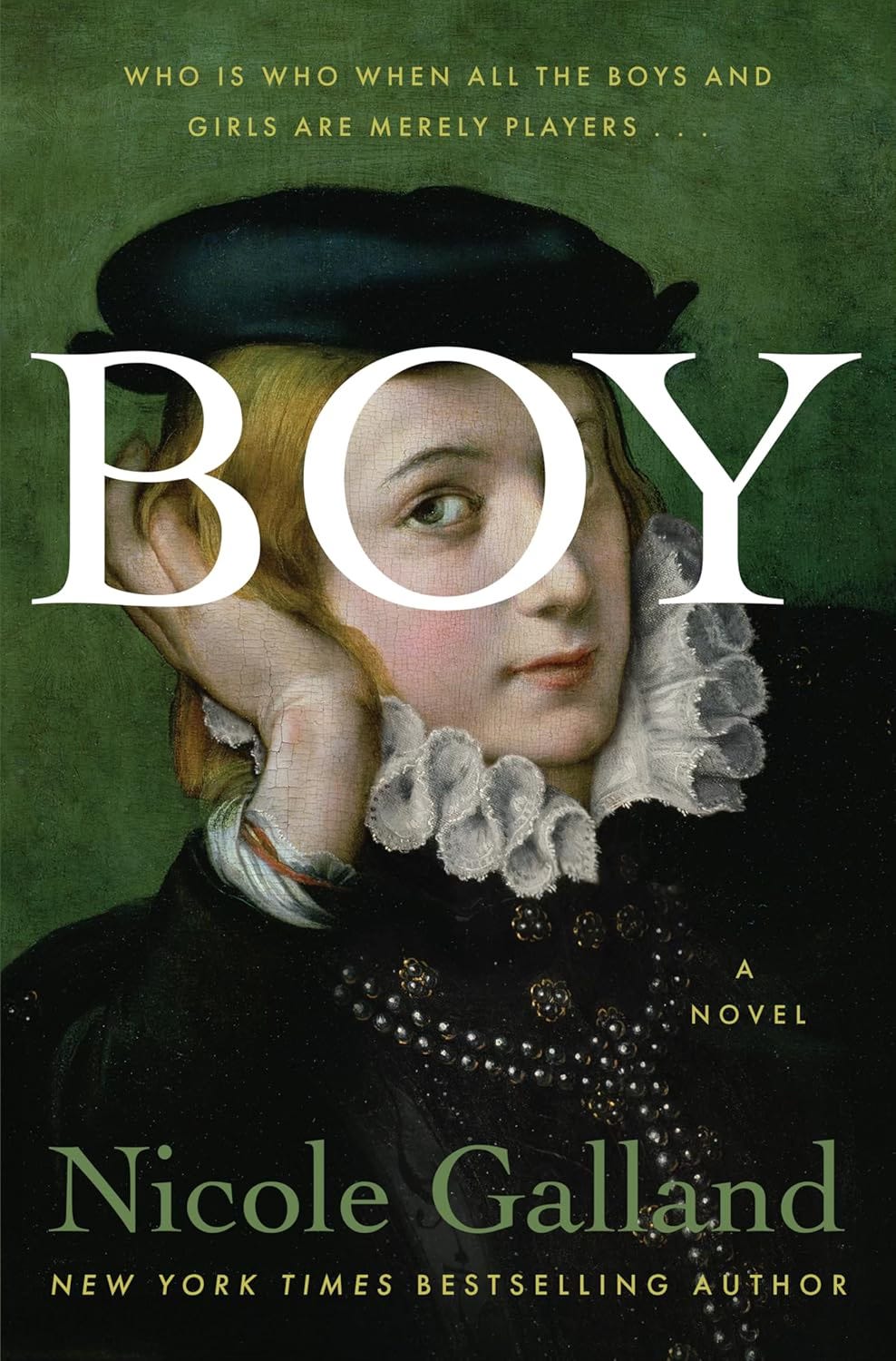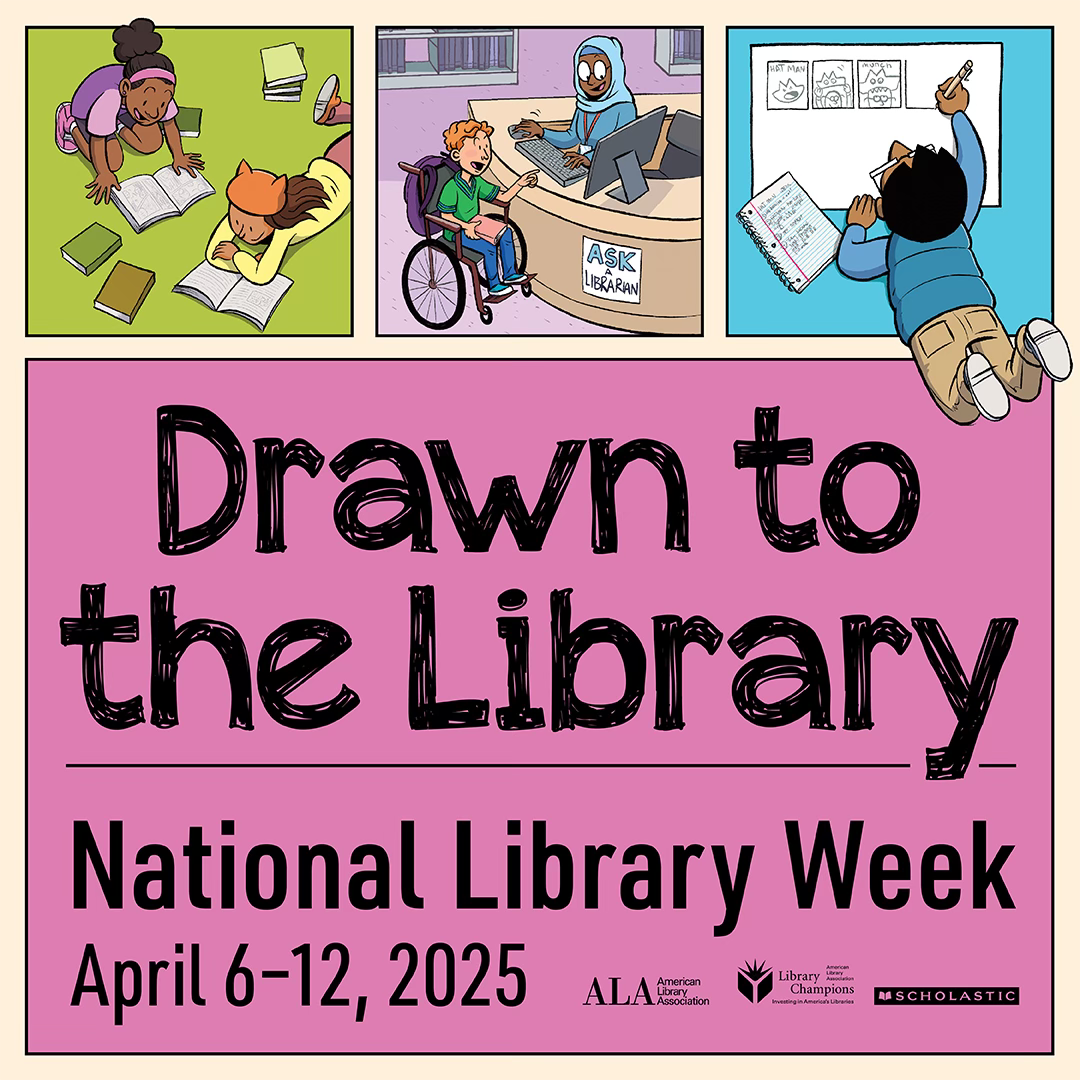Some Knitting Projects are Like Pantry Meals
A new design, a new book, and a juicy collection of links…
If you are any sort of cook at all, there are at least a couple of dishes you can make on autopilot—some kind of pasta, a quick stir-fry, or a pot of soup. You browse the pantry for staples and add whatever you have in the refrigerator that needs to be eaten before it goes bad. You begin chopping and sautéing, secure in the knowledge that you’ll end up with something nourishing and more-or-less delicious.
You don’t need a recipe because you’ve built a foundation of core skills and a basic knowledge of how ingredients behave and interact. You know which flavors appeal to those you need to feed, and you keep a supply of appropriate ingredients on hand.
If you’ve been knitting for a few years, there are projects you can make with the same ease as a pantry meal. It might be a dishcloth or a baby blanket or a scarf. For me, it’s hats, socks, and fingerless mitts or mittens. All I need is a couple of measurements of the body part to be covered. I can browse my stash for appropriate yarn and start knitting, confident that a wearable garment will result.
Farm & Fiber Knits just published my basic recipe for fingerless mitts.
This is not really a pattern. There is no specified size, gauge, yarn, or stitch pattern. You begin by measuring the hand of the intended wearer. You add your stitch and row gauge, based on a swatch made with the yarn and stitch pattern you want to use for your mitts. You plug those numbers into a couple of basic calculations and follow the instructions to knit the mitts in whatever size you need, using whatever yarn and stitch pattern pleases you.
Don’t let the calculations scare you. All you need to do is multiply and round the results. The recipe includes a worksheet to guide you through the process. If you want to replicate the mitts shown in the photo, you’ll have all the information needed to do so. But the Wanderlust mitts are intended as a blank canvas, a basic framework you can use to make mitts that are uniquely your own.
The Wanderlust Mitts recipe is only available to Farm & Fiber Knits subscribers. If you’re not already a subscriber, I think it’s worth your consideration. A monthly subscription is only $5.99, and you can cancel anytime. But I think you’ll want to stick around. The weekly email newsletter is full of interesting and useful information about knitting with natural fibers and the people who provide the yarn we love.
FYI: I am a regular contributor to Farm & Fiber Knits. The links above are not affiliate links; I receive no additional compensation if you subscribe.
I wrote a similar recipe for any-size, any-gauge socks which appeared in the Fall 2024 issue of Spin Off.
A couple of weeks ago, I wrote about my interest in Tudor England. I just read a new novel I’m happy to recommend to those who share that interest, and to those who love Shakespeare. It is Boy by Nicole Galland.
This story centers on two teenagers. Sander Cooke is a star player in the Chamberlain’s Men, Will Shakespeare’s theater company. His delicate beauty and skillful portrayal of female roles have made him a celebrity, sought out by both men and women of the nobility. But Sander’s apprenticeship is coming to an end, and his future employment as he ages out of female roles in uncertain.
Sander’s best friend is Joan Buckler, the daughter of a maker of buttons and buckles. Her precocious intelligence and relentless curiosity have overcome her lack of schooling, and Joan makes herself useful to those who are willing, despite her gender, to share the knowledge she seeks.
Disguised as a boy, Joan is introduced by Sander to Francis Bacon, the natural philosopher and adviser to Queen Elizabeth. Their association with Bacon embroils them in the political intrigue surrounding the Elizabethan court.
There are so many delights in this novel. Galland gives us an inside look at Shakespeare’s Globe Theater and the men who worked there. She takes us into the taverns and salons where the great minds of the age were debating the nature of our world and defining the methods of scientific inquiry. She explores the moral complexities of gender roles, the masks we choose to wear, and the costs of disguising our true desires. Blended throughout are the great themes of Shakespeare’s plays, from the power struggles of Richard II to Portia’s impassioned courtroom speech in The Merchant of Venice.
Galland strikes a graceful balance between the cadences of Elizabethan speech and more modern usage. Her narrative vividly evokes London at a time when there was only one bridge across the Thames, and only the wealthy had access to horses, let alone private carriages.
The audio narration of this book by Ell Potter is excellent. Her voice is clear and musical, with a beautiful English accent. I know this is a book I will listen to again.
Some things that caught my eye…
I was honored to be invited to appear as a guest on Cori Eichelberger’s video podcast, irocknits. If you’ve wondered about the woman behind the words of A Good Yarn, you’ll want to join us for a delightful hour talking about all things knitting. You can find out more about Cori here.
I enjoyed this article highlighting the artisans who worked on the renovation of the Frick Collection in New York. From the Parisian firm that recreated the silk velvet wall upholstery in the West Gallery to the glass artist in Murano who made Venetian glass lanterns for the new addition, I’m thrilled to see traditional handcraftsmanship still thriving and being appreciated.
The Morgan Library is celebrating its 100th anniversary as a public institution with an exhibition celebrating Belle De Costa Greene, the founding director of the library. You can experience the online exhibition here.
A Black woman (her father was the first Black graduate of Harvard) who spent most of her life passing as White, Belle Greene was hired as J.P. Morgan’s personal librarian in 1905 and spent more than 40 years acquiring and caring for an unparalleled collection of treasures.
Lovers of historical fiction will want to check out The Personal Librarian by Victoria Christopher Murray and Marie Benedict.
If you’ve wondered about the health impacts of microplastics in the environment, you’ll find this short video from the New York Times both enlightening and worrying. Remember, the synthetic fibers (acrylic, polyester, nylon) in our yarn are plastic, and shed fibers into the water system with every washing.
It’s National Library Week! I believe public libraries are at the foundation of a civilized society. Stop into your local library this week and borrow a book, make a donation, or simply say Thank you! to the librarians and volunteers who keep the doors open
Thank you, as always, for your time, attention, and support. I am continually amazed by the community of like-minded knitters, readers, and lovers of life who have found their way to this little corner of the internet.
Continue the conversation—what are the projects you knit on autopilot? What kinds of things would you like to be able to approach that way? What’s stopping you? I can’t wait to read about it in the comments.








Hi Sandi. I am a long-time reader and a first-time commenting. I saw your lovely chat with Corey this week. I listened to her all the time as well.
My autopilot knitting is for an international organization called Knitted Knockers. We are Knitters and crocheters who make handcrafted prosthetics for women who have undergone mastectomy. They are size specific. They are FREE And shipped by volunteers and makers like me all over the world. I am a state supplier for North Carolina and New York. By the end of the year, the National organization will have sent 1 million knockers since inception. The need is massive. The disease horrific. Maybe you can feature them in your article. KnittedKnockers.org
I love your recipe for mitts, and will share. People who buy a stand alone pattern can spring for the issue!